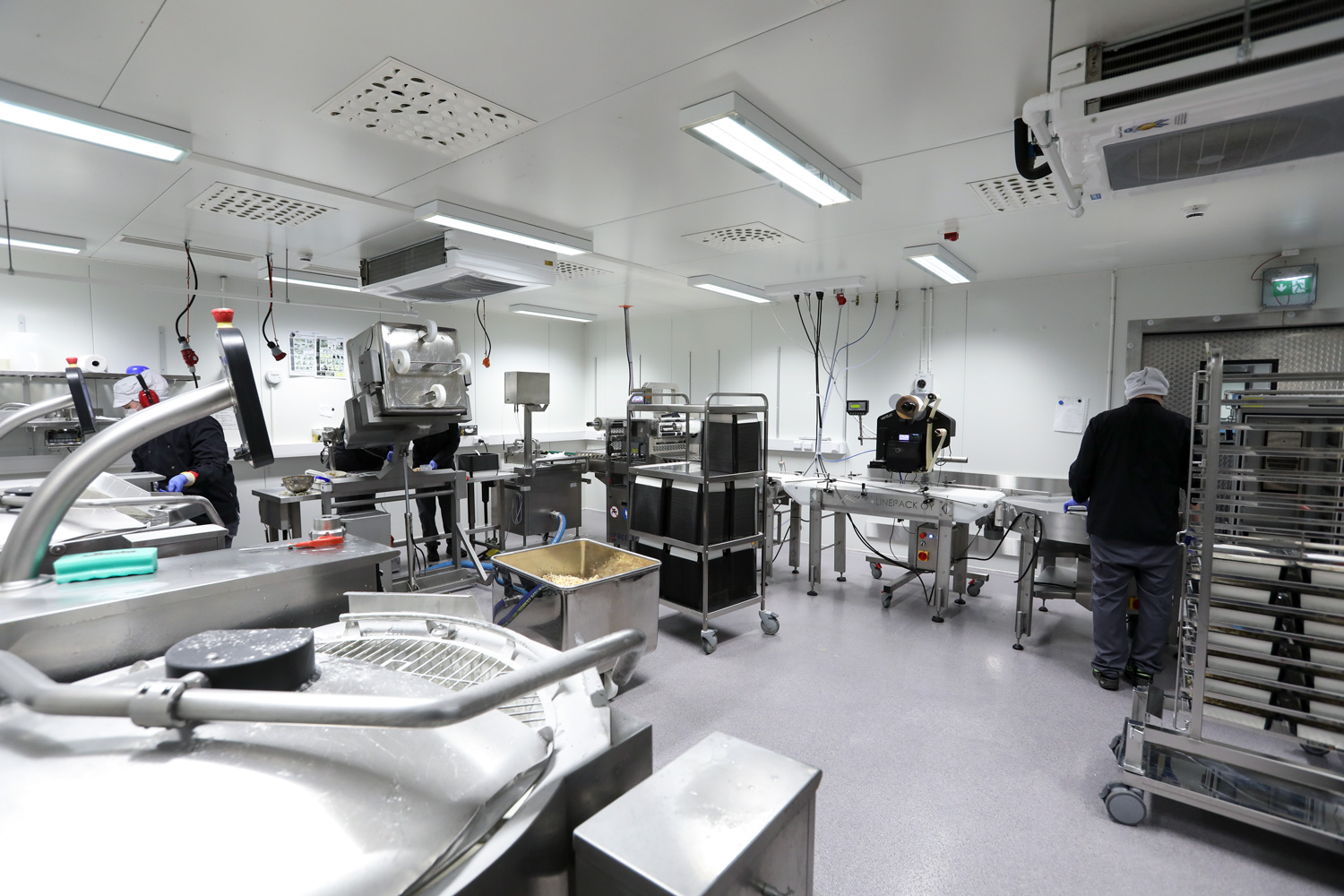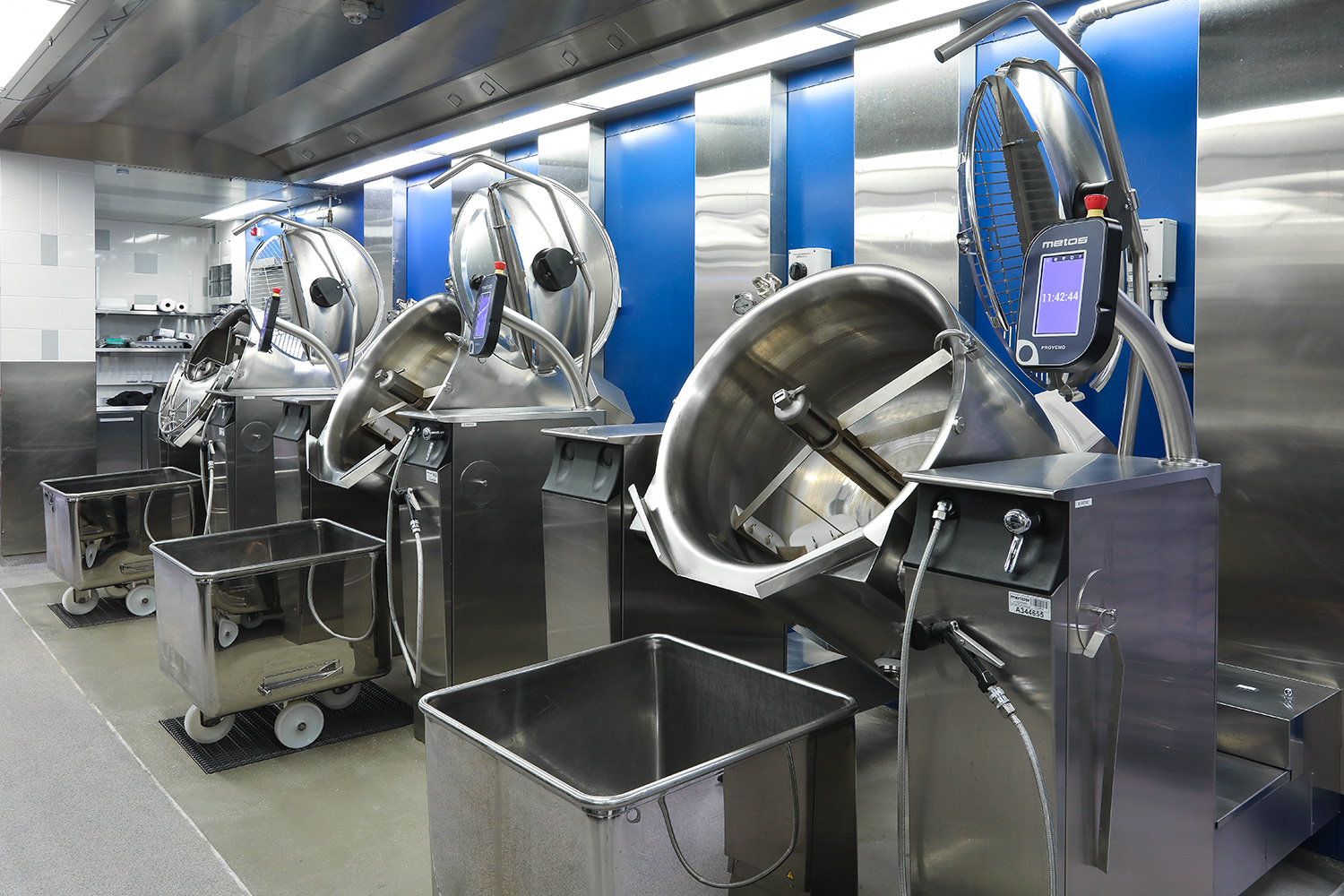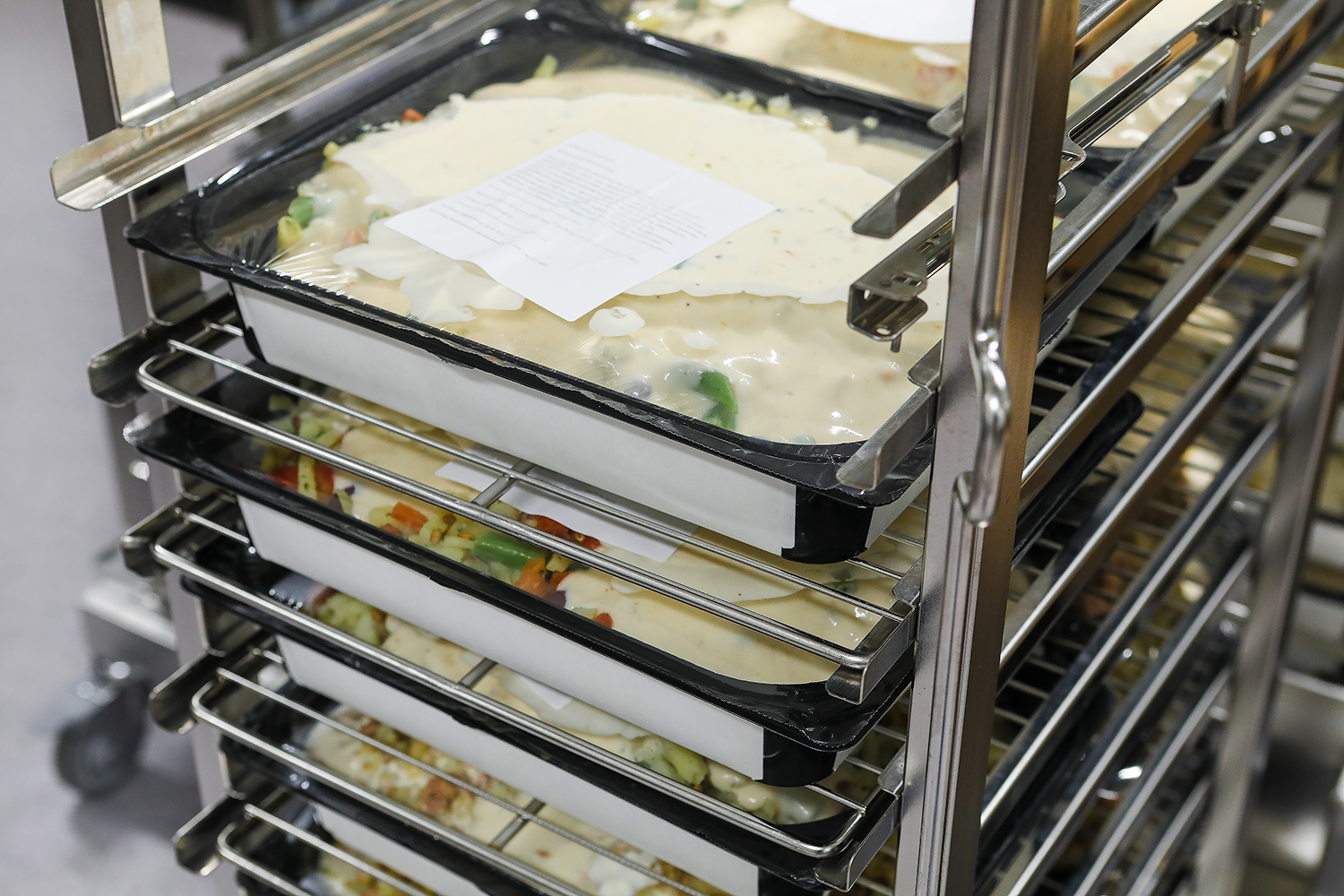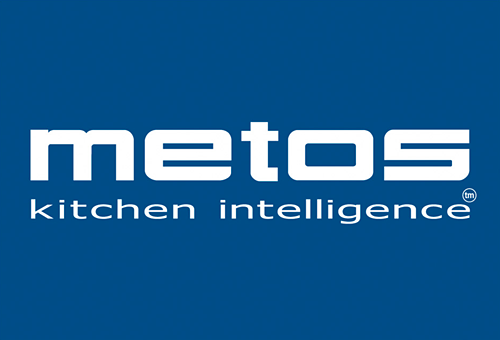

Porvoo’s central kitchen prepares food for schools and kindergartens in the Porvoo area, with the farthest destination being 15 km away. There are a total of 50 places, of which 30 are kindergartens and 20 are schools. Almost all food, i.e. about 95% of the production, is cold-processed, and a few foods are prepared using the cook-chill method. The daily manufacturing volume is a total of approximately 10,000 doses.
The manufacturing cycle goes as follows
The raw materials come to the central kitchen on Thursday. On Friday, the raw materials are dosed and weighed. On Monday, the food is prepared and moved to a large cold storage. On Tuesday, the food is transported to the destinations and on Wednesday it is heated for the diners. This process takes all the haste out of production. There are no extra stocks.
In the central kitchen, the food is prepared cold, it changes from raw material to a ready-made meal without cooking. In practice, production is not so time-bound. There are no mistakes, no extra transports and no unnecessary adjustments at all. The food is always fresh because it has not been cooked before, says Johannes Lohi, production manager of the central kitchen in Porvoo.
Ergonomics plays a central role in the cold preparation process, both in the central kitchen and in the satellite kitchens. The cold preparation of food in the central kitchen takes place mainly in kettles. In order to avoid scooping, the kitchen kettles have higher than normal stands, so that they can be emptied by tilting them directly into the big trolleys, or a pump is used for emptying. All kettles are cooled by circulating ice water, and this way the food stays cold during mixing. In the kettles, we use diagonal mixing, i.e. the mixing takes place in an inclined position. With this, the mixing of the components takes place very quickly and the structure of the food does not change.
From the trolleys, the food is dosed in the packaging line of the cold room into transport packages. In addition, the packaging line uses a pump to dispense any sauce that may be added to the food. During packaging, the sauce is prepared one after the other in two kettles in the cold room. When the second 200-liter kettle is empty, the pump hose is changed to a full kettle, and a new batch is started in the empty kettle.
Desserts are prepared in the kettles on the kitchen, such as curd, which remains in the kettles on hold after completion. At suitable intervals, the pump is moved from the packing room to the kitchen and the curd is pumped into the transport containers.


The food for the largest satellite kitchens is placed directly to oven trolleys from the packaging belt – and in these oven trolleys the food is also heated in the satellite kitchens. This way we avoid unnecessary heavy lifting.
– We don’t need ovens much in production, maybe only for pre-cooking a component, or similarly, if the oven at a kindergarten or school is broken, we can cook the food here. We also cook food for camp schools here. During the pandemic, we also cooked, cooled and packed thousands of individual portion packs every day to be delivered directly to the students, says Lohi.
Cold production was selected as the central kitchen’s manufacturing method
-I went around kindergartens and schools eating and started thinking about how the food should be prepared so that the end result on the diner’s plate would be as good as possible. In the process, I also take into account the efficiency and reliability of the operation, as well as saving energy. Above all, however, the quality of the food on the plate is the most important criterion.
-Furthermore, I toured several cold preparation kitchens and picked up the best practices from these to help me. I am an engineer by education and also studied grain technology at the University of Helsinki. So my approach and thinking to the field is a bit different. I applied the know-how acquired at the University plant on natural starches to cold preparation in our kitchen. It is especially important to use the right starch for each raw material in order to create a food mass of uniform quality. This prevents heavy ingredients from settling to the bottom while the liquid remains on the surface. The correct end result is almost always the result of long recipe testing.
-We have a 6-week rotating menu, with over 300 tested recipes including special diets in total. Recipe development is continuous and our goal is that we use almost no additives and that the food is as home-like as possible. We aim to completely get rid of sauce bases and ready-made broth flour. We bring the taste of the food’s raw material and nature’s real spices.
Process is as simple as possible
Lohi emphasizes that when there are many locations, it is important that the process is as simple as possible, right down to the heating. If the instructions are too complicated, as the number of personal increases and changes, there are also dozens of opportunities to do things wrong.
-Furthermore, we have invested in ergonomics so that there is very little lifting, and this is how we have kept sick absences to a minimum. We have 11 people working in the central kitchen and they rotate to different workstations every week. It is worth investing heavily in ergonomics. Good ergonomics have a direct impact on a good working atmosphere and low sickness absences, Lohi sums up.
